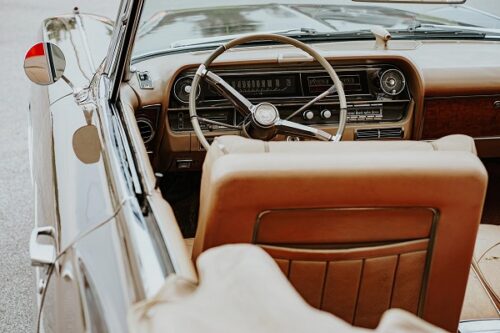24 May 2023
When the first cars were invented, there was still a lot of shaping to be done. A carriage was the earliest reference and, therefore, the earliest vehicles resemble these closely. You will often see bench seats and, on some models, single driver seats at the front. In rare cases, such as one of the first models designed by Karl Benz, there was even a reversed front seat since no one had to watch the horses. If you have ever sat reverse facing in a car, you can imagine this was not a success. Report by One4Leather.

The bench seat remained a staple for many years. Single seats were an uncommon, reserved only for racing cars or vehicles such as the Messerschmitt KR200, Peel P50 or BMW Isetta. It took the introduction of affordable European sportscars in the post-War periods, to create the next shift. The floor-mounted gear lever allocation and more compact design introduced bucket seats to the American market. American car users are more likely to use automatic transmission and often like to have a lot of space. This love for space is why bench seats still had a presence in sedans and minivans. In 2013, only one American car had a bench seat.
Another aspect that has had a great impact on car seats is safety. The retractable seat belt (invented in the 1950s) and the invention of airbags has significantly changed the way car interiors are constructed. Bucket seats offer higher safety standards and greater personal comfort. Bucket seats are likely the dominating form of seating in the future; however, automated driving could bring bench seats back, as they offer more sideways room and seating space.
When it comes to comfort and safety, leather has a variety of benefits to offer. Not only is it more durable, which is great for the frequent friction on the seats, it also has environmental and safety benefits.
We bring leather, material and fashion businesses together: an opportunity to meet and greet face to face. We bring them from all parts of the world so that they can find fresh partners, discover new customers or suppliers and keep ahead of industry developments.
We organise a number of trade exhibitions which focus on fashion and lifestyle: sectors that are constantly in flux, so visitors and exhibitors alike need to be constantly aware both of the changes around them and those forecast for coming seasons.